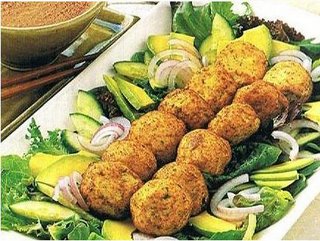As research continues, evidence linking meat-eating to other forms of cancer is building up at an alarming rate. The National Academy of Sciences reported in 1983 hat “ people may be able to prevent many common cancers by eating less fatty meats and more vegetables and grains.” And in his Notes on the Causation of Cancer, Rollo Russell writes, “ I have found of twenty-five nations eating flesh largely, nineteen had a high cancer rate and only one hade a low flesh, none had a high rate”
Some of the most shocking results in cancer research have come from exploration of the effects of nitrosamines. Nitrosamines are formed when secondary amines, prevalent in beer, wine, tea, and tobacco, for example, react with chemical preservatives in meat. The Food and Drug Administration has lableled nitrosamines “ one of the most formidable and versatile groups of carcinogens yet discovered, and their role… in the etiology of human cancer has caused growing apprehension among experts.” Dr. William Lijinsky of Oak Ridge National Laboratory conducted experiments in which nitrosamines were fed to test animals. Within six months he found malignant tumors in one hundred percent of the animals. “The cancers,” he said, “ are all over the place; in the brain, lungs, pancreas, stomach, liver, adrenals, and intestines. The animals are bloody mess.”
Tofu balls with salad
Preparation time: 20 minutes
Total cooking time: 10 minutes
Serve 4


Salad dressing
3 cloves garlic, chopped
½ cup (80 g) roasted unsalted peanuts.
2 tablespoons tamari
1/3 cup (80 ml) lime juice
2 tablespoons soft brown sugar
300 g hard tofu, roughly chopped fresh garlic chives
2 tablespoons sweet chilli sauce
2 fresh kaffir lime leaves, finely shredded
1 stem lemon grass, white part only, sliced oil, for deep-frying
50 g mixed lettuce leaves
1 small Lebanese cucumber, halved lengthways and sliced diagonally
1 small red onion, sliced
½ avocado, sliced
To make the salad dressing, place the garlic, peanuts, tamari, lime juice and brown sugar in a food processor or blender and process until smooth, adding 2-3 tablespoons of water to achieves the desired consistency. Transfer to a bowl.
Put the tofu, chives, sweet chilli sauce, kaffir lime leaves and lemon grass in a food processor and process until smooth. Transfer to bowl and form the mixture into 12 golf ball-sized balls.
Fill a wok or deep heavy-based saucepan one third full of oil and heat to 180C (350F), or until a cube of bread drpped into the oil browns in 15 seconds. Cook the tofu balls in batches for 2 minutes, or until browned. Remove, drain on paper towels and sprinkle with salt.
Put the lettuce, cucumber, onion and avocado on serving platter and arrange the tofu balls on top. Serve immediately with the dressing.
Nutrition per serve
Protein 15 g; Fat 30 g; Carbohydrate 15 g; Dietary Fibre 4.5 g; Cholesterol 0 mg; 1950 kJ (465 cal)
No comments:
Post a Comment